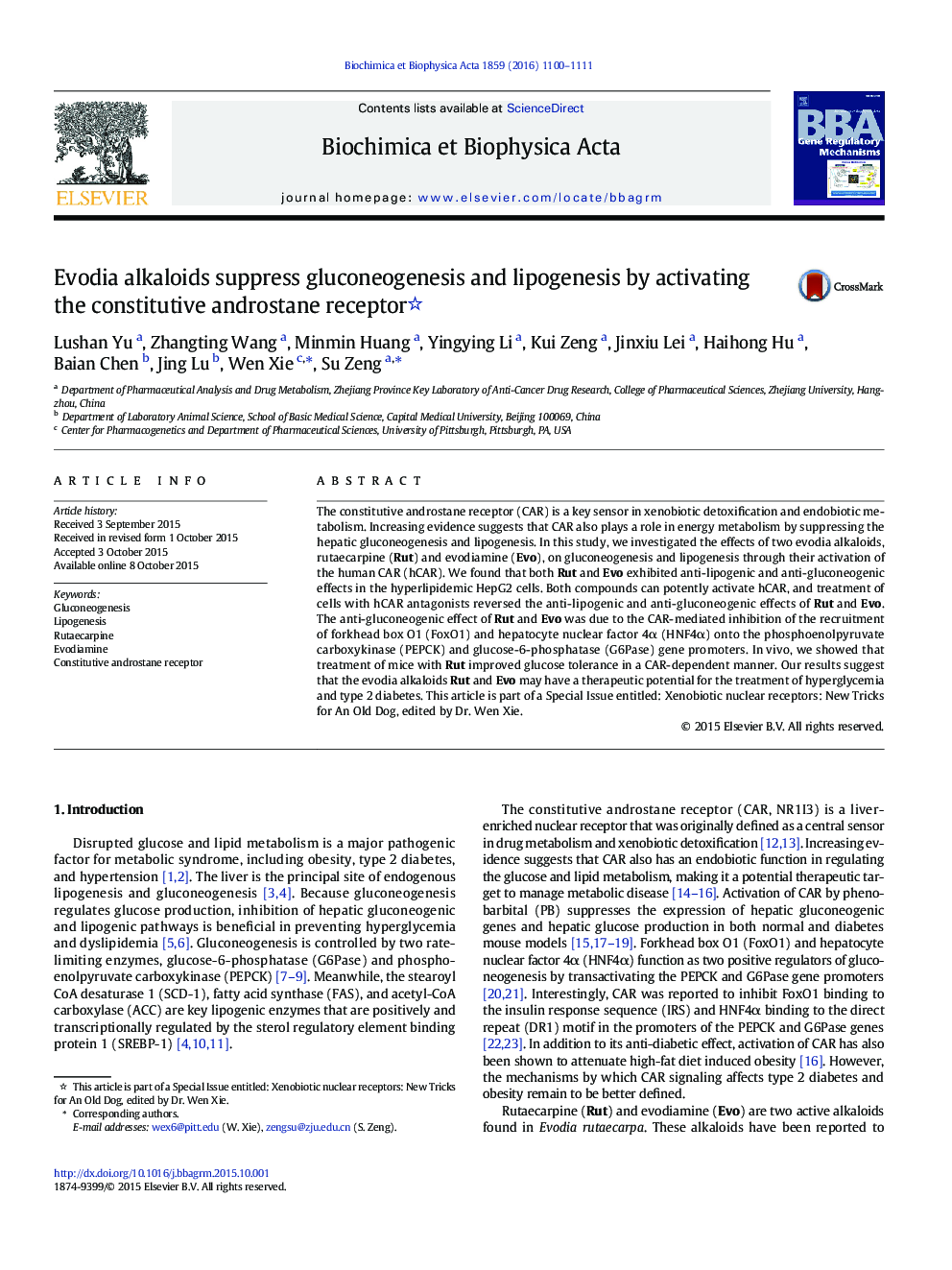| Article ID | Journal | Published Year | Pages | File Type |
|---|---|---|---|---|
| 1946298 | Biochimica et Biophysica Acta (BBA) - Gene Regulatory Mechanisms | 2016 | 12 Pages |
•Rutaecarpine and evodiamine can active the human and rat CAR.•Rutaecarpine and evodiamine exhibit anti-lipogenic and anti-gluconeogenic effects.•CAR-mediated inhibition of FoxO1 and HNF4α onto gluconeogenic gene promoters•Rutaecarpine treatment improves glucose tolerance in a CAR-dependent manner in mice.
The constitutive androstane receptor (CAR) is a key sensor in xenobiotic detoxification and endobiotic metabolism. Increasing evidence suggests that CAR also plays a role in energy metabolism by suppressing the hepatic gluconeogenesis and lipogenesis. In this study, we investigated the effects of two evodia alkaloids, rutaecarpine (Rut) and evodiamine (Evo), on gluconeogenesis and lipogenesis through their activation of the human CAR (hCAR). We found that both Rut and Evo exhibited anti-lipogenic and anti-gluconeogenic effects in the hyperlipidemic HepG2 cells. Both compounds can potently activate hCAR, and treatment of cells with hCAR antagonists reversed the anti-lipogenic and anti-gluconeogenic effects of Rut and Evo. The anti-gluconeogenic effect of Rut and Evo was due to the CAR-mediated inhibition of the recruitment of forkhead box O1 (FoxO1) and hepatocyte nuclear factor 4α (HNF4α) onto the phosphoenolpyruvate carboxykinase (PEPCK) and glucose-6-phosphatase (G6Pase) gene promoters. In vivo, we showed that treatment of mice with Rut improved glucose tolerance in a CAR-dependent manner. Our results suggest that the evodia alkaloids Rut and Evo may have a therapeutic potential for the treatment of hyperglycemia and type 2 diabetes. This article is part of a Special Issue entitled: Xenobiotic nuclear receptors: New Tricks for An Old Dog, edited by Dr. Wen Xie.
